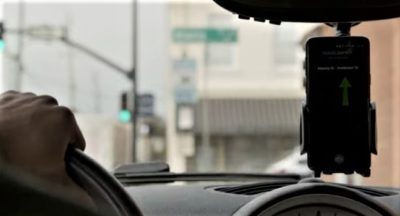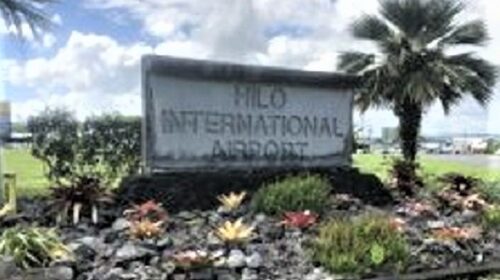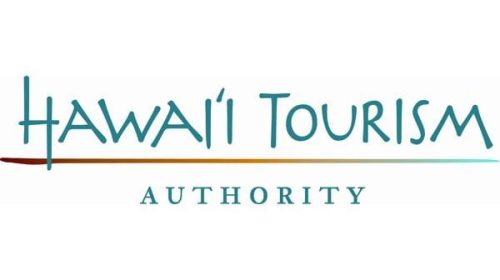Get Road Alerts in Hawaii As You Travel
The Hawaii Department of Transportation (HDOT) announced the availability of connected vehicle technology within the Ala Moana Boulevard/Nimitz Highway corridor. The connected vehicle technology can provide road alerts in Hawaii and other information about the corridor to motorists, bicyclists, and pedestrians through a free application.
HDOT requested proposals for a connected traffic control system on the Ala Moana Boulevard / Nimitz Highway corridor in late 2019 as part of a research project with the University of Hawaii. The goal of the research project is to determine the capabilities of the latest connected traffic control systems to efficiently and safely manage multiple modes of transportation. Installation of the system components was completed in April.
“Connected and automated vehicle (CAV) technology is the future of transportation,” said Senator Lorraine Inouye, Chair, Senate Transportation Committee. “The recent effects of COVID-19 and the State’s economic dependency on tourism has further shown us that we need to continue to look for ways to diversify our economy. The V2E pilot is just one of many ways we can make Hawaii an attractive test site for CAV manufacturers. This joint partnership with HDOT, UH, and Econolite shows the initiative that we need to position Hawaii to be a leader in CAV technology.”
“The Vehicle to Everything (V2E) solution selected for the Nimitz pilot is a huge advancement in management of our corridors,” said Hawaii Department of Transportation Deputy Director for Highways Ed Sniffen. “We’re now able to communicate with the controllers using 4G cellular modems and utilize adaptive signal control to respond to situations causing congestion along the route. It’s a total game changer.”
Roughly 720 detection zones (cameras and pucks) and 34 roadside units were installed through the Nimitz V2E Pilot. The detection zones measure traffic through a combination of video detection, which is not recorded, and magnetometer. Data from the detection zones tells the controllers what types of vehicles are moving down the corridor and how efficiently they are moving. Communications between the detection zones, roadside units/controllers and the Advanced Traffic Management System (ATMS) is facilitated through secure CV2X (cellular) and DSRC (Digital Short Range Communications) signals.
Intersections on Nimitz Highway/Ala Moana Boulevard that are part of the V2E pilot are:
- Kalia Road / Ena Road and Ala Moana Boulevard
- Kahanamoku Street and Ala Moana Boulevard
- Hobron Lane and Ala Moana Boulevard
- Ala Moana Park Drive / Atkinson Drive and Ala Moana Boulevard
- Ala Moana Center Exit and Ala Moana Boulevard
- Ala Moana Center Entrance and Ala Moana Boulevard
- Piikoi Street and Ala Moana Boulevard
- Queen Street and Ala Moana Boulevard
- Ala Moana Park Drive / Kamakee Street and Ala Moana Boulevard
- Kewalo Basin entrance and Ala Moana Boulevard
- Ward Avenue and Ala Moana Boulevard
- Koula Street and Ala Moana Boulevard
- Cooke Street and Ala Moana Boulevard
- Coral Street and Ala Moana Boulevard
- Keawe Street and Ala Moana Boulevard
- Forrest Avenue / South Street and Ala Moana Boulevard
- Channel Street and Ala Moana Boulevard
- Punchbowl Street and Ala Moana Boulevard
- Halekauwila Street / Richards Street and Nimitz Highway
- Alakea Street and Nimitz Highway
- Bishop Street and Nimitz Highway
- Fort Street Mall and Nimitz Highway
- Bethel Street / Nuuanu Avenue and Nimitz Highway
- Smith Street and Nimitz Highway
- River Street and Nimitz Highway
- Pacific Street (westbound) and Nimitz Highway
- Pacific Street (eastbound) and Nimitz Highway
- Alakawa Street and Nimitz Highway
- Fishing Village and Nimitz Highway
- Waiakamilo Road and Nimitz Highway
- Kalihi Street and Nimitz Highway
- Mokauea Street and Nimitz Highway
- Puuhale Road and Nimitz Highway
- Sand Island Access Road and Nimitz Highway
Motorists, bicyclists, and pedestrians traveling through these intersections can receive safety information such as audible alerts when there are potential conflicts through a free app called TravelSafely. The app is available in the Apple App Store or on Google Play. More information on the TravelSafely app can be viewed here.
Representative Henry J.C. Aquino, Chair, House Transportation Committee added: “This kind of connectivity has tremendous opportunities to prioritize road safety and could encompass or complement recent bills passing the State Legislature including which could be very beneficial for our state both from a safety standpoint and for further research, development and other innovations.”
Total cost for the Nimitz V2E Pilot, which includes installation of the system, training, cybersecurity, and warranty/support services, was $4.68 million. Additional details on the pilot can be found here.
HDOT thanks the University of Hawaii College of Engineering, Senate and House Transportation Committees, and its partners for their support as we continue to explore advancements in our traveler information and Intelligent Transportation Systems.
Video of the news conference announcing the pilot on August 4 can be viewed on the HDOT YouTube channel.
#rebuildingtravel




